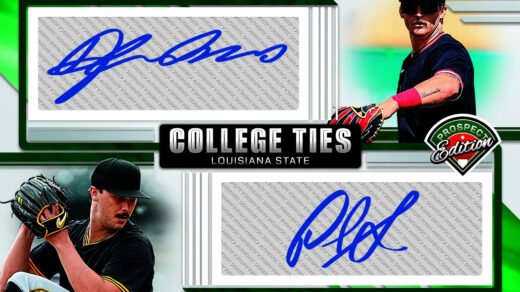In a time when baseball was less a commercial juggernaut and more a burgeoning pastime, relics like the 1910 Ty Cobb “Orange Borders” card serve as snapshots, chronicling the evolution of both the sport and its collectibles. Currently gracing the auction block at REA Auctions, this card is a veritable unicorn in the realm of pre-war baseball memorabilia—a find so rare that even seasoned collectors might count themselves lucky to witness it.
Issued during a period when baseball cards were more often found in candy boxes than behind layers of secure glass cases, this card emerged from the mysterious “Orange Borders” set. Produced collaboratively by the Geo. Davis Co., Inc. and P.R. Warren Co. of Massachusetts, the cards were distributed not through conventional retail channels but nestled within packages of “American Sports – Candy and Jewelry.” This peculiar method of distribution has contributed to their rarity, as many no doubt perished along with discarded packaging.
The set is a festival of contrasts—vivid, fiery orange borders bursting with life against the antiqued imagery of early baseball heroes. While even cards featuring lesser-known players are difficult to procure, the presence of one featuring Ty Cobb elevates the series to mythic status. Cobb, legend narrates, was as fierce on the diamond as the rustling 20th-century winds that first whistled past fans filling newly minted ballparks.
Yet here we are, over a century hence, with this scarce Cobb card graded merely SGC 1—its condition suggesting a well-loved history rather than pristine preservation. Indeed, its wear might even be a point in its favor, a tangible connection to its era, resonating more as an artifact steeped in nostalgia than as a mere collectible.
The card’s origin story reads like a whisper from baseball’s yesteryear, a bygone time when collecting cards was more about completing stories than elevating market values. Cobb’s status as one of the sport’s earliest legends combined with the card’s elusive nature grants it significant importance in the collecting world, a totem from an epoch where sporting memorabilia was still emerging.
Auctions such as the one currently hosted by REA are showcases of suspense and intrigue, places where the past and present collide in a fanfare of interest and bids. At present, this particular piece of cardboard gold is looking for offers upwards of $2,200—a sum that might seem modest compared to the astronomical prices some contemporary cards fetch, yet undeniably justified given what this card represents.
Yet, $2,200 is just the beginning. As word of this auction spreads amongst collector circles, the anticipation is that the final sale could escalate significantly. There’s no telling precisely how high this unicorn might leap as its stint on the auction block gains momentum.
For collectors, some engage more with nostalgia than with potential profit, this Cobb card is more than just venerable commodity; it’s a living page from the annals of baseball history—a rich tapestry connecting modern players to their dog-eared, sepia-toned ancestors. These collections are imbued with stories, memories passed from hand to hand, scenting the air with whispers of bygone summers and dusty diamond fields.
Holding the 1910 Ty Cobb “Orange Borders” card is akin to capturing a fleeting moment from the past. It’s a chance to cradle a sliver of baseball’s golden age, to admire the illustration of Cobb, fierce and unwavering, as it was first seen by enthusiasts from another century.
For die-hard collectors or those simply charmed by the romance of distant legends, the card isn’t just an acquisition. It represents a connection to a landscape of storied history, a narrative that ties collectors and players, past and present, into the great continuum of baseball’s evolving story. Capturing such a piece is not about closing a transaction but reopening a conversation whispered through time—a testament to the timeless allure of America’s pastime.




